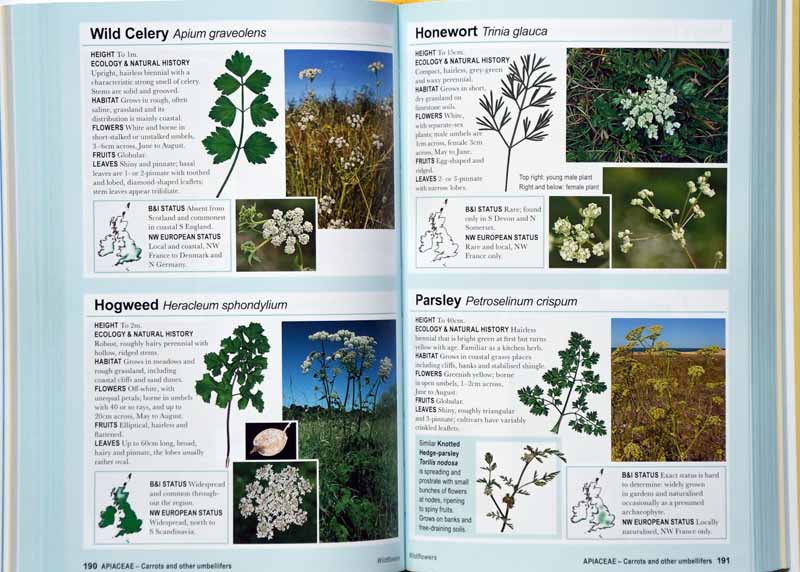Coastal Wildflowers
Paddy Tobin Book Review
This book delivers far more than its title promises as a great number of the plants included have never felt the salty spray of the sea on their flowers or foliage. It might have been more accurate to say the book describes plants of coastal counties for the range presented certainly extend far beyond the shoreline and one is left wondering what was excluded in what strikes me as a very comprehensive selection of our native flora.

I was hugely impressed and was sure I was going to enjoy this book enormously even before getting into the body of the work when I read in the Photographic Credits that all of the 1,500 photographs, bar seven, had been taken by the authors themselves, Andrew Cleave and Paul Sterry. This immediately reassured me that this was the work of two people who had walked the highways and byways, hills and valleys, bogs and beaches and had looked at, examined and photographed each plant they now present to us in this work. When I read a gardening book I am more likely to take advice and guidance from an author with earth under the fingertips (Sarah Raven, for example) than from one who tells you how wonderful they are and pose for flattering and atmospheric photographs. (I won’t give an example here!) This book was written by two people with dirty knees who have given the time needed to become experts in our native wildflowers and page after page bear this out with excellent photography and clear, concise and precise descriptions.
Following the usual introductory sections, common to all such books, there is an excellent short chapter describing the various habitats we find at the coast or, as the authors put it, “in sight of the coast” – Sandy beaches and dunes, Shingle, Estuaries and saltmarshes, Cliffs, Machair, Maritime heath and Manmade habitats, all important as guidelines in identification for each will suit some species and not others – indeed, habitat is as important a factor in the identification of some orchids as their morphology.
Some sample pages – click to enlarge:



The species sections follow, a short section for trees and shrubs followed by the main body of the book dealing with wildflowers (600 species) in family groups to aid comparison and identification. There are short sections afterwards on The Isles fo Scilly, Arctic and Alpine flora meet the coast and a section on Non-flowering plants. The listings are comprehensive and this will certainly appeal to enthusiastic amateurs, naturalists, botanists, indeed anybody with an interest in our wildflowers. I would caution that it might be a slightly challenging book for the beginner but would urge the beginner to opt for quality and reliability rather than a book which loses its usefulness within the season. Start with a good book, such as this, for it will be reliable and relevant for years to come.
A wildflower friend posted some of her first photographs of the season recently, from coastal sand dunes near her home, and I long to be out and about again, camera in hand, dirty knees etc and I think this volume will be well handled and constantly used through the year.
[Field Guide to COASTAL WILDFLOWERS of Britain, Ireland and Northwest Europe, Paul Sterry and Andrew Cleave, Princeton University Press, Oxford, 2022, Softback, 352 pages, £20, ISBN: 9780691218151 ]
